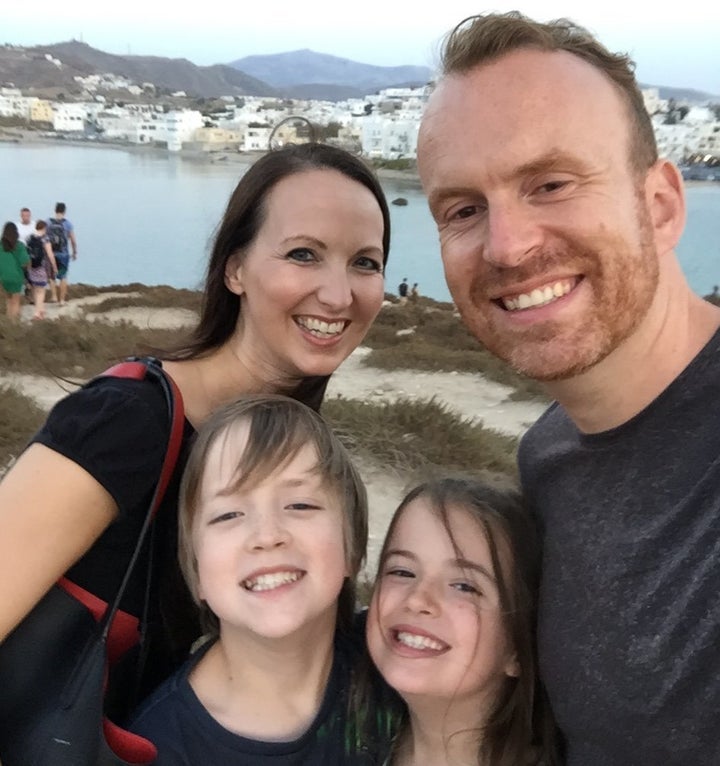In ‘What Works For Me’ - a series of articles considering how we can find balance in our lives - we talk to people about their self-care strategies. If you’d like to contribute your story, email us.
When things get too much for author Matt Haig, the dad-of-two will fire up his laptop, roll out his yoga mat and begin 20 minutes of stretching and deep breathing.
“If I’m in an anxious patch, I do it every day,” he says. “We’ve got two children and they’re both bad at getting to sleep, so we go into their room [he and his wife take it in turns] and my daughter will say, ‘daddy put on the yoga video’ because it helps her get to sleep. So I’ll be in the dark with the laptop, just doing yoga on the floor of their bedrooms.”
Sometimes the children will join in, other times they’ll drift off to the sound of meditation music. If Matt has been working late and is finding it hard to switch off, or is still feeling particularly anxious later that night, he will lie in bed with his legs in a diamond shape (also known as the reclining goddess pose) to try and settle his mind.
Haig has been incredibly open about his mental health over the years and his books have changed lives. The 43-year-old lives with depression and anxiety, and has written at length about his experiences which, in his early twenties, almost led him to take his own life.

The author’s latest book ‘Notes On A Nervous Planet’ is a guide for staying sane in a world that’s constantly switched on. Released on 5 July, it details the numerous coping mechanisms that have helped him over the years, one of which is yoga.
Matt says he practises it primarily for dealing with anxiety rather than getting fit. He doesn’t attend classes at his local gym, preferring instead to follow YouTube videos. “Yoga TX do a lot of videos,” he says. “I tend to use a lot of their stuff. It’s nothing strenuous but I notice when I’m on the brink of a patch of anxiety, just being religious about following these yoga videos in sequence calms me down.”
He says the best thing about yoga, for him, is the breathing. “My anxiety is linked to shortness of breath and getting a tight chest,” he explains, adding that yoga helps to “elongate your breathing or make you conscious about breathing in slowly”.
“Anxiety will tighten your chest, it’ll hunch your shoulders, and yoga reverses all that,” he adds. “With chest openers I feel the biggest release of tension.”
The author says child’s pose, pigeon pose and chest openers like camel pose really help. Leaning forward and grinning he tells me his favourite “show-off move” is the crow pose (where you balance on your hands with your feet off the floor). “That one doesn’t rely on flexibility - it’s just strength and I can do that,” he adds proudly.
Matt caveats that there are times when no amount of yoga has helped his mental health - and that’s OK. “It’s not made me worse, it just hasn’t made me any better,” he says. When you start to rely on one particular self-care strategy, it can be scary when it doesn’t work. “It’s like if you’ve been taking an antidepressant and then it suddenly stops working.”
Five other self-care techniques Matt swears by:
:: Running
:: Limiting social media time
:: Limiting hours of work (especially of an evening)
:: Going to bed before midnight
:: Not drinking alcohol on consecutive days.
On the whole, yoga has played a crucial part in helping him keep his head above water. He recognises that he will always have depression and anxiety but knows there are ways to better manage it. He has also overcome severe agoraphobia and, most recently, an overwhelming fear of speaking publicly to embark on a UK book tour.
“It’s not simply the yoga moves themselves that help psychologically, it’s the fact I know it’s there,” he says. “When I first had anxiety and mental health issues, one thing that made me feel worse was that I felt like I had no defence from them - and I never knew why I was getting it.
“But over the years I’ve understood the relationship between the mind and the body - and one of the big things I write about in both my books about mental health is how the line that we draw between the body and the mind is like a false line. I think yoga is one of the things that bridges that.”